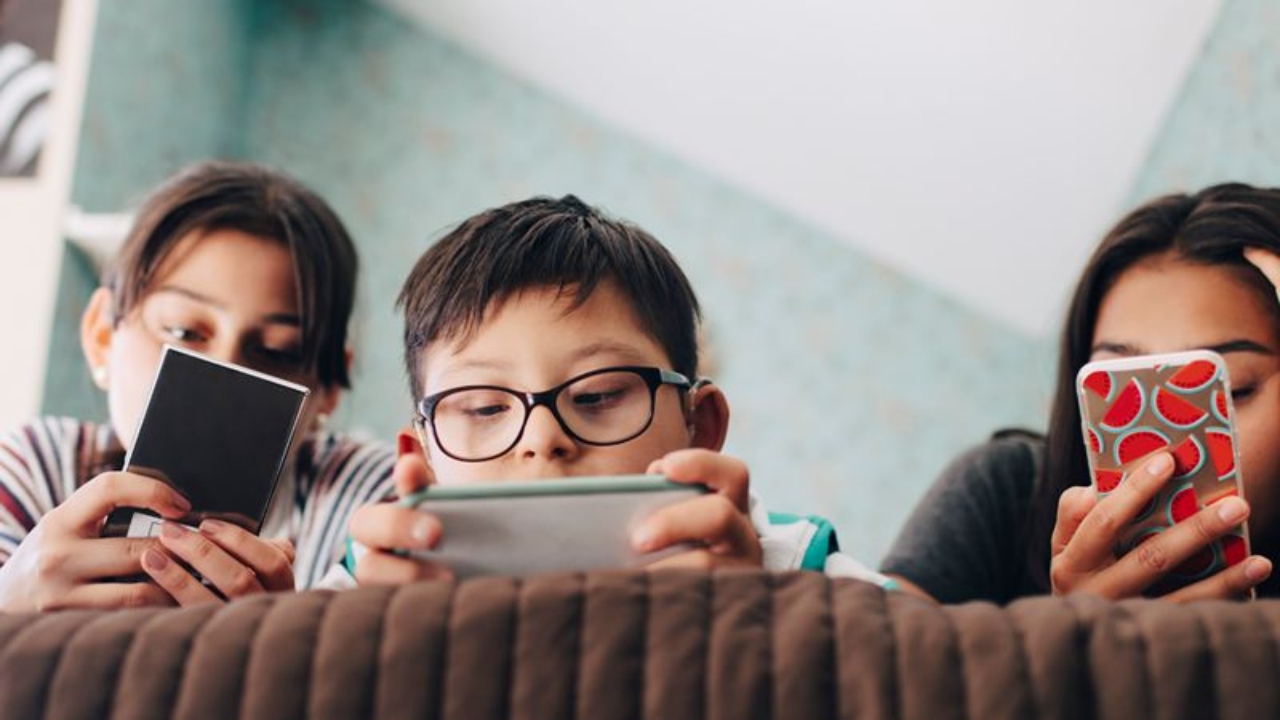Today, we are all surrounded by screens. Children are constantly looking at a screen, especially on mobile devices and television. So, what harm does this have? Let’s take a closer look at the negative effects of prolonged screen viewing on children and how you can limit this use.
When we say smart phones, tablets, televisions, computers, wherever we turn our eyes in the house, we encounter a screen. Many of these screens make our daily work easier, but The effects on children are not much like adults. Studies show that the mental and psychological health of children who look at the screen for a long time are adversely affected.
Especially The longer the screen time for children younger than 6 years old It was observed that mental and psychological development slowed down as well. In other words, a smartphone that you put in front of your child while he is eating can affect his whole life. So what should I do? Let’s take a closer look at the negative effects of prolonged screen viewing on children and how you can limit it.
What exactly is screen time?
Before going into details, it is useful to briefly talk about what screen time is. Screen time, such as a person’s smartphone, tablet, television, computer refers to the amount of time a device looks at its screen. Even though it is often equated with watching television, screen time is no longer limited to this in today’s technology.
Now even white goods have screens on them, but these are not included in the mentioned period. person’s attention, the duration of watching the images that he has to pay attention to, Calculated as screen time. The prolongation of this period negatively affects both children and adults. However, the intensity of its negative impact on children is undisputed.
What should be the ideal screen time for kids?

The World Health Organization says that children under the age of 2, i.e. 24 months, should never look at any screen. The American Academy of Pediatrics loosens this up a little more, and Babies older than 6 months for reasons such as video talking or watching educational videos. He says they can look at the screen.
Children aged 2.5 – 5 years, provided that they do not exceed one hour a day They can spend time in front of the screen. Screen time management of children aged 6 and over can be left to the control of their families. However, screen time should never be allowed to limit a child’s physical activities or disrupt sleep patterns.
What are the negative effects of prolonged screen viewing on children?

A joint study by San Diego State University and the University of Georgia reveals the negative effects of prolonged screen viewing on children. Children who look at the screen for more than an hour a day and spend time with electronic devices It was clearly observed that his psychological health deteriorated.
The average screen time of adolescents is 7 hours. A terrible time. Children exposed to this much screen time face a much tougher cognitive challenge than children exposed to an hour of screen time a day. In other words, children who stare at the screen for a long time struggle to maintain their mental health.
Children exposed to this much screen time they are more prone to developing anxiety and depression, they have difficulty in controlling their emotions, they become argumentative and quarrelsome, they have difficulty in fulfilling their responsibilities because they have distraction.
Are there any positive effects of spending time in front of the screen?

Of course, for both children and adults, spending time in front of the screen has more positive effects than negative ones. For example, Even the fact that you are now informed by reading this article is a positive effect. A similar positive effect is seen when children younger than 2 years of age are video chatting with relatives.
The mental development of children who learn about family and kinship relations by video calling is shaped accordingly. Likewise, watched and played on different devices, specially designed for kids Watching educational videos and using educational applications also contribute positively to the development of children.
At this point, the biggest responsibility falls on the parents. After the age of 2, your child can spend an hour a day with the screen. The important thing is how it was affected during this time. Do not sit and watch the same series as you. Let him watch cartoons or other videos specially prepared for him. Rest assured, even these simple steps will change your child’s whole life.
What should be done to make children look at the screen less?

Which nursery goes to read a book while parents are sitting in the living room watching TV and hanging out on social media? Parents should set an example for their children in this regard. If you want your child to read, study or play with their toys one hassle you will turn off the TV and put your phone aside.
Making a plan to limit screen time is extremely important. your child likes or There is always something you can watch with confidence. You should identify these and schedule your child to watch them during screen time. In this way, you both protect your child from negative effects and spend time with pleasure.
For children who are a little older and harder to control, your imagination should come into play. Find games you can play without looking at the screen, participate in different activities, go out on the street, create something together. Teach your child that the virtual world is not the only option before they become adults, there are dozens of other things they can do. Rest assured, children who can have fun on their own will be much stronger individuals when they grow up.
Looking at the screen for a long time We talked about the negative effects on children. and what you can do to limit that time. Technology is our biggest helper, but if we don’t know how to use it properly, it can be a disaster for the next generation. For this reason, we should be conscious and explain to our children that everything is not about the virtual world.
